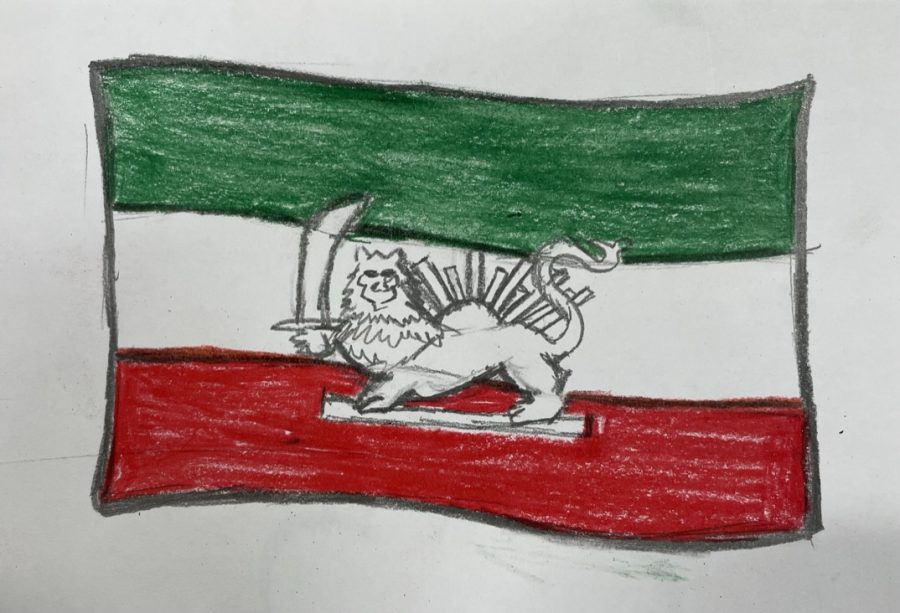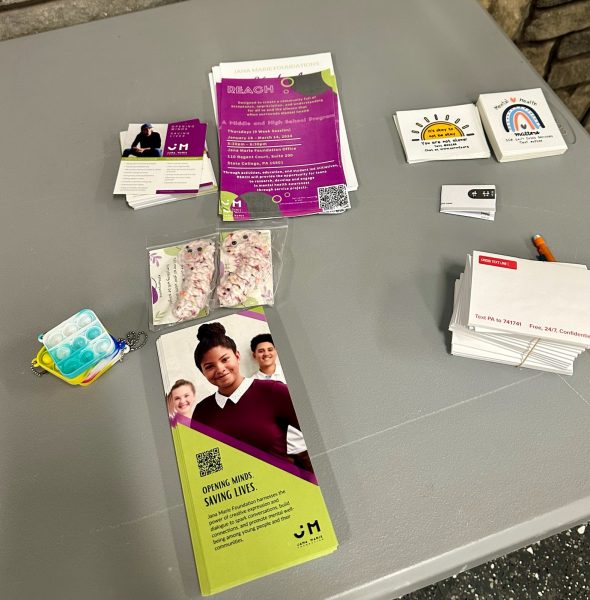The Past and the Future of Iran: In The Hands of the Iranian People
Iranian flag that protestors claim to dissent the Islamic Republic of Iran.
January 10, 2023
What’s happening in Iran may not be clear to everyone in the world, but what should be known is that it is a human rights issue. To understand the hardships in the present day, looking at the past is crucial. It’s important to note that the Iranian people have a long history of Revolution.
State High’s AP Human Geography teacher, Author Entz, said, “What’s happening in Iran right now is pretty revolutionary and has a lot of similarities to what happened in 1979 when there were protests and uprisings against the regime at the time which they felt was authoritative and repressive. Right now that’s what I think that many people in Iran are showing with these current uprisings. They want a government that’s not going to be authoritative or repressive.”
On May 1908 Oil was first discovered in Iran.
Oil had been discovered in Southwest Iran and European countries began getting into contact with the Middle East in hopes of achieving full control over the land and its goods. The British subject William K. D’Arcy was then granted permission from the then Shah to begin concessions on the land of Iran. The concession provided the West and Britain, the right to explore, exploit, and export oil goods from the country. That leads to the beginning of the West extracting oil and other concessions from the Iranian government and its people. The Anglo-Iranian Oil Company (AIOC) is an example of an oil company that was set up in Iran to create stability in unstable areas that drained Iranians of profits and control over their own land. In other words, the British due to the APOC granted dominance over Iran and its people. Western companies were known to support military coups and were proven that the United States government assisted in the making of a coup that overthrew the Mohammad Mosaddeq government, which actively pursued Iranian independence from Britain. This coup was encouraged by the West’s interest in their ability to exploit Iran for their oil reserves.
1905-1906 The Constitutional Revolution took place.
The Constitutional Revolution of Iran established the Parliament which bounded the power of constitutional laws to the court. In Tehran (the country’s capital), public mosques became political public spaces that emphasize the transition between sacred places and political platforms against the Qajar Dynasty.
1925 The fall of the Qajar Dynasty.
Reza Pahlavi was declared the new Shah of Iran, As the Shah, his policies included mandating women to remove their veils or hijabs. The Pahlavi Dynasty’s main goal was to modernize Iran. Public education grew as well and Reza’s dictatorial leadership style became more known to the Iranian people.
1963 White Revolution
The White Revolution helped reform social, political, legal, and economic standings and furthered the freedom of women in Iran. Literacy within families, especially among women, grew within the country. But, Islamic leaders in Iran did not agree with such ideals being adopted into Iranian law. Eventually, democratic ideals were shut down but opposing Shia figures.
1975 The Shah came to power as the one political party in Iran
The White Revolution’s reforms began getting criticism from several parties in Iran. Including the poor and middle class that stated that the economic development of Iran only benefited the rich furthering unequal distribution of these privileges amongst the oppressed. The Shah became more repressive as they installed secret police forces to suppress dissent. These police forces became later known as the morality police which play a huge role in the oppression of Iranians today including censorship, arrests, and torture of political prisoners that rounded up as dissent over the now autocratic regimes of Iran grew.
By definition, in an autocracy, one person controls decisions on a majority of people by inciting threats of violence to control their population. Therefore, no dissent is tolerated.
1978 Demonstrations against the government begin.
On Jan 6, a front-page article in an Iranian newspaper criticizing Khomeini, the new Iranian leader or Shah, grew popular receiving attention nationwide. As the Iranian people watched this, they were even more influenced to take protest. As education got more accessible, especially to women, they started learning about their rights, and in this case their lack of them. Protests began to take the streets and forced the government to answer to why they weren’t given their basic rights. However, established police forces began firing at protestors instead. The violence incited only ignited more protests to fire up.
“Most historians argue these protests weren’t about Islam, but rather, the discontent over living conditions, pay cuts, and the threat of unemployment fused with the general disillusionment and anger with the regime,” Entz said.
1979 Iranian Revolution
Mohammad Reza Shah Pahlavi was the leader of Iran until 1979. The Iranian Revolution led the former Shah to flee Iran while harboring a criminal dictatorship within his country’s borders. This resulted in Ayatollah Ruhollah Khomeini assuming control of Iran. To note, Khomeini during the White Revolution was against the “Westernization” of Iran, underlying his resentment towards the voting rights and education of women.
Thus, the present.
The Islamic Republic of Iran – formed after the 1979 Revolution – is a theocracy controlled by those in power against the progression of its country. The morality police that the Iranian government previously established enforce rules from its cleric leaders. For instance, the mandatory hijabs for women.
The morality police use violence and inhumane measures to crack down on dissent and protests. The government knows that if they continue enforcing their oppressive rule, they must find a way to silence their people before they can be overthrown as it has been made clear from history and previous revolutions. It’s clear the Iranian people have succeeded before.
“The government knows how autocratic it is and how controlling it is. People don’t like living under that form of government. So sooner or later there is going to be an uprising. One of the ways to prevent uprisings is having the morality police in place. They’ve been doing it for decades. It’s a police state essentially,” Entz stated.
The Iranian government still continues to be oppressive. To be clear, this oppression has nothing to do with the Islamic faith or its followers. It’s the people in charge who continue to exploit their citizens and force them to abide by these rules that prevent the freedom of its people.
“By 1979, Iran already had a long history of clerical involvement in protest and dynamic change, but it also had a long history of pushing for constitutions and liberty,” Entz noted.
Journalists who have been reporting from Iran have been exiled. The internet frequently gets shut down for days on end to contain the media and information from spreading internationally. Morality policies have been installed in homes to crush dissent and keep the government in power.
Installing these measures means restricting education and awareness of what’s going on in Iran. In doing so, the government further isolates Iranians and pushes them away from freedom.
Protests from 1983, when hijabs were first made mandatory, sparked even larger in September 2022 as a result of Masha Amini’s death at the hands of the morality police.
First, it was mostly women protesting, but men participated as well. Young children in schools began demonstrating as well, risking their lives in protest against the government. News of this leaked internationally and protests outside the country’s borders also began.
The Islamic Republic of Iran continues to execute and oppress its citizens. As a result, protestors and civilians have been sentenced to prisons, “reeducation” camps, and death.
A government that displays such force and blatant acts of disregard for human life is unstable. A government willing to execute its own people is inhumane. A government that continues to punish its people for a living is vulnerable to revolution and succession.
The future of Iran is in the hands of the Iranian people. They have the world and history on their side.












